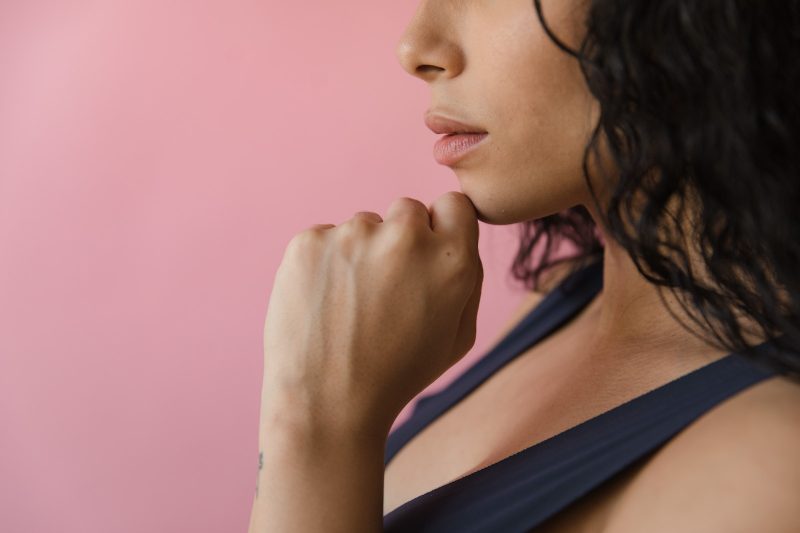The importance of body language on a first date
Body language often speaks louder than words, especially on a first date. It can show attraction, lack of interest, nervousness and more. Knowing the importance of interpreting body language is essential for successful connections.
On a first date, look out for small gestures. See how often your date makes eye contact or if they lean in towards you. Crossed arms and legs may mean defensiveness or unease. Fidgeting or phone checking might show boredom or worry.
Nonverbal cues can be both obvious and subtle. Be aware of your own body language to show your date interest and confidence. Small changes in posture or tone can make a big difference.
Interpreting body language should not be the only way to decide if you’re compatible with someone. Use it as an extra tool to grow connections.
University of California did a study which found that 55% of communication comes from nonverbal cues, like body language and tone of voice. If their eyebrows are higher than their interest level, it’s time to go!
Reading facial expressions
To read facial expressions effectively in the context of a first date, understanding eye contact, recognizing genuine smiles, and decoding micro-expressions are key. By being attuned to the subtle cues conveyed by your date’s facial expressions, you can gain insight into their thoughts and emotions, ultimately helping you form a better connection.
Understanding eye contact
Eye contact is essential for successful communication. It conveys emotions and builds trust. Our eyes are like windows to our soul. They can show joy, sadness, anger or confusion. Understanding these non-verbal cues helps us understand the real message and create a bond.
Eye contact conveys how sincere and confident the speaker is. Looking straight at the other person shows honesty. Looking away may mean uncertainty or dishonesty.
In some cultures, long eye contact is seen as aggressive or dominant. In Western societies, it usually means confidence. In Asian countries it could be seen as rude or confrontational.
Around 80% of communication is non-verbal. Professor Diane Herbert did an experiment where people were shown pictures of fearful eyes and they had increased anxiety.
A genuine smile is more valuable than a thousand words, but sadly many fake smiles are just as worthless as Monopoly money.
Recognizing genuine smiles
Facial Expression Analysis: Genuine Smiles.
Detecting true smiles is key. Here’s how:
- Look for eye crinkles: A real smile engages the eyes, creating lines around them.
- Check the duration: A quick smile might be fake. If it lasts more than 5 seconds, it’s probably genuine.
- Watch body language: People experiencing true happiness tend to be more open and relaxed.
No single indicator can confirm a genuine expression.
Pro Tip: Microexpressions – brief, involuntary facial expressions – could show the real emotions that other nonverbal cues don’t.
Even tiny twitches can tell us a lot, so pay attention or you’ll miss the micro-drama!
Decoding microexpressions
Humans possess the skill of decoding microexpressions. These are brief, fleeting facial expressions that show a person’s true feelings. They can be clues to their thoughts or emotions. Furrowing brows or tightening lips? Anger. A gentle smile and crinkling around the eyes? Happiness.
It’s not easy to read microexpressions. To do so requires observation and knowledge of facial muscle movements. There are a few techniques to help, like recognizing neutral faces and getting familiar with emotion expressions. It’s still a challenge for many though!
Next time you’re in a conversation, pay attention to your interlocutor’s face. It can greatly enhance your active listening skills. Aristotle said understanding microexpressions was important to understanding feelings. Scientists are still studying this today, and it’s important for us to recognize these subtle emotions accurately.
Interpreting gestures and postures
To understand the intricacies of body language on a date, you need to be well-versed in interpreting the gestures and postures. In order to help you with this, we are presenting you with a section on “Interpreting gestures and postures” with “What crossed arms or legs mean”, “The significance of leaning forward or backward”, and “Hand movements and their meanings” as solutions. This will give you a better understanding of your date’s nonverbal cues.
What crossed arms or legs mean
Individuals cross their arms or legs for various reasons. Interpreting their meaning is essential. It could be a sign of defensiveness, discomfort, or lack of interest. But it can also show confidence and relaxation. The context matters!
Crossed legs can mean tension or nervousness. Or, if accompanied by eye contact, it could show comfort and interest.
It’s important to look at facial expressions too. Observing multiple behaviors helps understand the overall message.
Open body language with welcoming gestures conveys confidence. Active listening is shown through eye contact.
Positive body language can create an atmosphere for better communication and problem-solving. Lean forward to show interest, lean back to show reluctance, and lean sideways to show confusion.
The significance of leaning forward or backward
Leaning forward or backward can have huge significance. It can show the intensity of emotions, like confidence, aggressiveness or submissiveness. The degree of leaning shows a person’s attitude towards the conversation or situation.
Forward leaning indicates interest, engagement and attentiveness. It also conveys dominance and control. On the other hand, leaning backwards shows disinterest and disagreement. It could also signify submissiveness or discomfort.
Small changes in body posture bring drastic changes in the message conveyed. Tilting the head suggests curiosity, while bowing down implies humility and respect. Cultural distinctions should also be kept in mind, as different cultures interpret body movements differently.
My colleague leaned forward aggressively during our meeting with the client. It was amazing how he was unaware of it until it was pointed out after seeing the video recording! Keep an eye on hand gestures as they can tell more than words!
Hand movements and their meanings
Hand gestures are an important part of nonverbal communication. Knowing the subtle messages they convey is vital for interpreting them accurately. Here are some examples:
- Pointing – Show direction or focus
- Thumbs up/down – Express positivity or negativity
- Handshakes – Demonstrate respect, trust and greeting
- Fist bumps – Represent approval, unity and solidarity
- Open hand gestures – Symbolize honesty, openness and candidness.
It is essential to take into account the context, culture and body language when interpreting hand movements. For example, crossed arms may indicate defensiveness, but can just be a habit too. Being aware of these nuances will improve understanding and communication.
The Journal of Neuroscience has conducted a study which states that hand gestures activate the same neural regions as speech production does.
Interpreting hand gestures is essential for effective communication, so always take note of them to grasp the correct meaning. If actions speak louder than words, then understanding hand gestures is key!
Recognizing verbal cues
To recognize verbal cues on a first date with the helpful guide of “How to Read Body Language on a First Date,” this section titled “Recognizing verbal cues” with its sub-sections, “The tone of voice,” “Word choice,” “Pause and hesitation” will provide you with valuable insight into understanding the verbal language of your date.
The tone of voice
Humans are very sensitive to sound, like melodies and accentuation of those speaking around us. Tone of voice adds a lot to verbal communication. It can tell the listener the speaker’s feelings about the topic, their emotional state, and even their character.
Analyzing the speaker’s pitch, volume, speed, and intonation (including rises and falls in frequency) helps detect how they feel about certain subjects. Ultimately, tone of voice affects how the message is received.
Although people often focus too much on the words, tonality also needs attention. Emphasizing important points and changing the tone based on context, can make communication better.
Choosing words carefully is really important, as it can turn a compliment into an insult.
Word choice
Choosing the Right Words
Verbal cues in communication are important. Using the right words can help identify and interpret these cues. This leads to better communication.
Varying Your Words
Including variations in tone, pitch, and words can show subtle nuances in a sentence. Certain words or phrases can show agreement/disagreement, emphasis, or intention. Knowing cultural references and idioms is important for understanding the message.
Nonverbal Cues
Verbal cues aren’t the only way to communicate. Nonverbal communication can tell you more about the speaker’s intent and emotions. Body language can show comfort, engagement, or disinterest in the conversation. Facial expressions can show happiness, sadness, or confusion.
Practicing active listening and adapting your communication style to the speaker’s needs helps you interpret the message better. Applying these techniques can create an environment of engagement between speakers. This helps effective collaboration towards a given goal.
Pause and hesitation
Pauses and hesitations? Watch out! These verbal cues often come in form of pauses and hesitations. It can help us analyze the conversation’s rhythm and flow. We can usually tell if someone is uncomfortable with a topic or thinking deeply.
Listen carefully to any breaks or pauses between words or sentences. Usually, a hesitation pause is longer than a regular one. It can range from 500 milliseconds to several seconds. However, some people may naturally pause for longer, so consider the context.
High-stress, low confidence, unfamiliarity, social anxiety, cultural differences, ageing and language barriers can cause prolonged pauses during conversations.
It’s important to understand the emotions behind spoken words. Ignoring these cues would mean missing out on vital info that could hinder communication.
Be mindful when having discussions – pay attention and get the full picture! It’s like solving a puzzle. Except, in this case, the pieces are people’s words and the stakes are much higher.
Putting it all together
To understand the complete picture of your date’s body language, combine various cues that they are giving off. You can improve your body language reading abilities by following tips for practice. In this section, ‘Putting it all together’ with ‘Combining different cues to understand the whole picture’ and ‘Tips for practice and improving your body language reading abilities’ as solutions, learn how to effectively read your date’s body language to enhance your communication and establish a deeper connection.
Combining different cues to understand the whole picture
It’s vital to amalgamate different cues to get the entire picture. Combining varied indicators such as tone, posture and facial expressions helps to form a conclusive understanding of the context. This method of assimilation enables individuals to make informed judgments about various circumstances.
One cue can create new info that changes overall perceptions. A slight change in one element can alter the pattern and messages conveyed. It’s a complicated process where people need to balance all relevant cues and develop patterns leading to their conclusions.
Professionals need to comprehend how cues interconnect and combine over time. There are no fixed rules in deciding the importance of a single element, making it even more tricky. Amalgamating cues implies relying on one factor may lead to an incomplete comprehension of any situation.
Studies suggest body language conveys 80% of what we express, verbal communication just 20%. This makes a precise interpretation by combining different indicators more important in corporate settings, where subtle actions can mean critical decisions.
Research published in “The Journal of Nonverbal Behaviour” shows people who pay attention to non-verbal cues score higher on accuracy tests. They are also better at detecting lies than others. Your body language may speak louder than words, but it is up to you to listen and interpret the hidden meanings.
Tips for practice and improving your body language reading abilities.
You can sharpen your body language reading skills with practice and effort. Here are a few tips:
- Notice delicate hints: Focus on nonverbal signs, facial expressions and micro-expressions.
- Understand the circumstances: Think about the social scene, cultural backgrounds and individual characteristics of the person you’re watching.
- Look for groupings of behavior: Analyze clusters of body language instead of interpreting one gesture on its own.
- Listen actively: Communicate meaningfully while noticing both verbal and nonverbal speech.
To develop your body language reading abilities, first observe your own actions and be aware of how they might be seen. It’s also helpful to seek feedback from people you trust.
It’s important to realize that learning to read body language takes time and needs continuous effort. Yet, with hard work and persistence, it can be a useful way to enhance communication.
A true story proves the importance of body language reading. A detective with the skill to recognize suspects’ nonverbal signs solved a difficult case that had been unsolved by other investigators. By paying attention to slight body language signs during an interrogation, the detective could tell when the suspect was lying and eventually resolve the crime.
Frequently Asked Questions
1. How can I tell if my date is interested in me based on their body language?
Some signs that your date is interested in you include tilting their head towards you, maintaining eye contact, facing their body towards you, and mirroring your body language.
2. What are some signs that my date is uncomfortable or not interested?
If your date is avoiding eye contact, crossing their arms, or leaning away from you, they may be uncomfortable or uninterested. Also, if they seem distracted or are constantly checking their phone, it may be a sign that they are not fully engaged in the date.
3. Should I be paying attention to my own body language during the date?
Yes, it’s important to be aware of your own body language and make sure you’re sending positive signals to your date, such as leaning in, smiling, and making eye contact.
4. How can I use body language to build a connection with my date?
You can use body language to build a connection by mirroring your date’s body language, using open and welcoming gestures, and leaning in when they’re speaking. Also, try to maintain good eye contact and actively listen to what your date is saying.
5. Can body language alone determine compatibility?
No, body language is just one aspect of communication and shouldn’t be relied on solely to determine compatibility. It’s important to also have good conversation, shared interests, and similar values to truly connect with someone.
6. How can I improve my body language skills for future dates?
You can improve your body language skills by practicing good posture, maintaining eye contact, and using open and welcoming gestures. It can also be helpful to observe other people’s body language in social situations and practice mirroring their positive behaviors.








